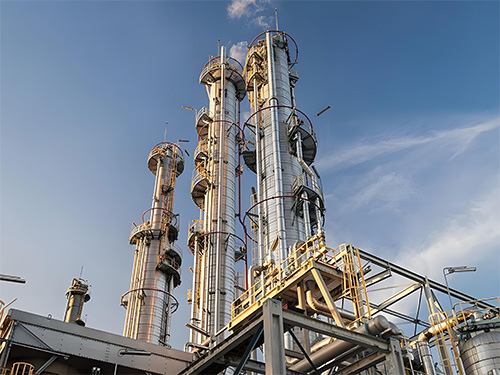
In the petrochemical and chemical processing industries, non-hydrogen dewaxing process equipment plays a crucial role. It lowers the pour point of petroleum or chemicals to ensure product flowability in low-temperature environments. Choosing the appropriate non-hydrogen dewaxing equipment is essential for improving production efficiency and ensuring product quality. This article will analyze how to select the right non-hydrogen dewaxing process equipment and explore key factors to help enterprises make informed decisions.

I. Basic Features of Non-Hydrogen Dewaxing Process Equipment
Non-hydrogen dewaxing process equipment is designed to lower the pour point of products through physical or chemical methods, thereby improving their low-temperature flowability. The equipment typically includes heating systems, mixing systems, cooling systems, and monitoring and control systems. Understanding these basic features helps in finding the most suitable equipment for selection.
1.Heating System: Heats the product to the required temperature for dewaxing to ensure the effective action of dewaxing agents.
2.Mixing System: Ensures uniform mixing of dewaxing agents and products to achieve optimal dewaxing effects.
3.Cooling System: Sometimes used to regulate the reaction temperature to facilitate the action of dewaxing agents.
4.Monitoring and Control System: Real-time monitoring of the reaction process to ensure the stability and efficiency of equipment operation.
II. Key Factors in Choosing Non-Hydrogen Dewaxing Process Equipment
1.Processing Capacity
Processing capacity is a primary consideration when selecting equipment. The capacity of the equipment must match the production scale to avoid over-investment or insufficient processing capability. Based on actual needs, choose equipment models and specifications that can meet production requirements.
Production Scale: Assess the quantity of product required to be processed daily or hourly.
Future Expansion: Consider potential future production expansions and choose equipment with some scalability.
2.Dewaxing Effectiveness
Dewaxing effectiveness is a key indicator of equipment performance. The equipment should effectively lower the pour point of the product and maintain stable performance. Choose equipment with good dewaxing effectiveness to ensure product flowability in low-temperature environments.
Pour Point Reduction: Select equipment that can achieve the required pour point reduction.
Effectiveness Stability: Assess the stability and consistency of the equipment’s performance over long-term operation.
3.Energy Efficiency and Cost
Energy efficiency and cost are crucial factors in determining the economic viability of the equipment. Choose high-efficiency, energy-saving equipment to reduce energy consumption and operating costs. Additionally, evaluate maintenance costs and the return on investment to ensure maximum economic benefit.
Energy Consumption: Choose equipment with high energy efficiency to reduce energy costs.
Maintenance Costs: Assess maintenance and repair costs, selecting equipment with lower maintenance costs.
Return on Investment: Calculate the equipment’s return on investment to ensure long-term economic benefits.
4.Equipment Stability and Reliability
Equipment stability and reliability directly affect production efficiency and long-term operating costs. Choose equipment with reasonable structural design and strong durability to reduce failure rates and improve production stability.
Structural Design: Choose equipment with a well-designed and durable structure to minimize failures.
Material Quality: Ensure that equipment materials have excellent corrosion resistance and high-temperature performance.
5.Supplier Reputation and Service
The reputation and service of the supplier have a direct impact on the equipment’s quality and long-term operation. Choose suppliers with good reputations to obtain high-quality equipment and excellent after-sales service. Understand the supplier’s market reputation and customer feedback to select a trustworthy partner.
Market Reputation: Research the supplier’s market reputation and customer feedback.
After-Sales Service: Choose suppliers that offer comprehensive after-sales service, including technical support, maintenance, and spare parts supply.
6.Technical Support and Service
Technical support and service are essential for ensuring the long-term stable operation of equipment. Choose suppliers who offer comprehensive technical support, including training, technical consulting, and remote assistance, to effectively address operational issues.
Training Services: Choose suppliers that provide equipment operation training to enhance the technical skills of operators.
Technical Consulting: Ensure that suppliers offer professional technical consulting services to resolve technical issues during equipment operation.
IV. Conclusion
Choosing the right non-hydrogen dewaxing process equipment is crucial for enhancing production efficiency and ensuring product quality. By understanding the equipment’s basic features and key selection factors, enterprises can make informed decisions and select the most suitable equipment solutions. It is hoped that the analysis provided in this article will help you make the best choice when selecting non-hydrogen dewaxing process equipment, assisting your enterprise in achieving success in the market.



